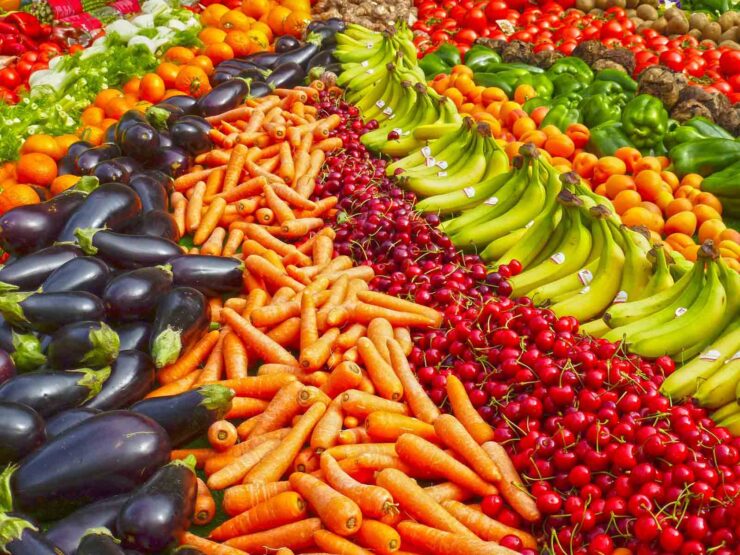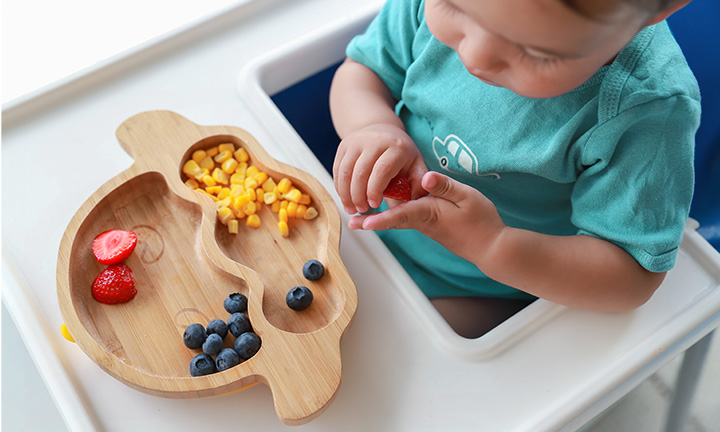Table of Contents
You can always start feeding your child at home, even if they are very young and require a balanced diet. If you find it challenging to achieve the necessary balance for their growing body, you can always turn to specialized stores, one of which we will recommend later in this article. Feeding your child a balanced diet is easy and straightforward, you won’t even realize how simple it can be.
Start with single-ingredient foods

To start, you should begin feeding your child with the simplest foods, typically consisting of a single ingredient. There’s no need to introduce complex dishes to your child right away because their stomach may struggle to handle such a load. Furthermore, if your child already has a food allergy or heightened sensitivity, it will be more challenging to pinpoint the culprit.
Begin with basic first foods like bananas, sweet potatoes, carrots, avocados, peas, and other vegetables. You can also introduce nuts, but you must exercise extreme caution. Some children can develop a life-threatening almond allergy immediately, so you need to be very careful if you decide to experiment with this type of food.
Steam, boil, or microwave the food.
Scientists recommend using a steamer to soften solid foods for your child. This is necessary because your child likely doesn’t have good teeth yet. Soft food is one of the key conditions for your child to feel comfortable and be able to consume solid food.
Some researchers also suggest using boiling or a microwave to prepare food for your child. In any case, while boiling is an option you can consider, we do not recommend using a microwave. Of course, if there are no other options, you can use it, but the microwave tends to fry rather than cook. This can potentially harm your child’s body with various types of overcooking that can naturally occur with this method. We want to remind you that burnt bits are carcinogenic, and they can have a more significant impact on a child’s body compared to an adult’s.
Puree the food
Once you’ve softened the food, it’s important to turn it into a puree. While you can certainly offer the soft food as is, your child will appreciate it if you make a puree out of it. Moreover, this enhances the overall digestibility of the food, which won’t lead to further digestion issues.
All these steps in preparing for adult feeding are quite complex, as you can see. And we haven’t even reached the stage where you need to manually balance all the food and gradually add new ingredients. To avoid this, you can simply opt for ready-made products at Organic’s Best Shop. Based on the name, you can be confident that they offer only organic products for your child.
Start with small amounts

Never overfeed your child or give them a large amount of food all at once, as if they were already an adult. You need to understand that there is a significant risk of developing allergies even to seemingly harmless foods. There is also a high chance of your child experiencing indigestion and related issues.
You should introduce food gradually, without any sudden increases in quantity. Keep this in mind to maintain your child’s health at the appropriate level.
Offer a variety of foods
Now we’ve come to the most challenging stage, especially if you haven’t already taken advantage of our suggestion to visit an organic store with ready-made products. You’ll need to manually balance the food with all the essential microelements that exist in nature. This task is quite complex and beyond the capability of most parents. Consequently, an unpleasant situation can arise when your child doesn’t receive an adequate amount of essential microelements and vitamins, which significantly affect their future growth.
Once again, if you opt for the offer available at Organic’s Best Shop, you won’t have to worry about balancing these essential elements. You can immediately provide your child with ready-made products that have been formulated by leading scientists to contain all the necessary elements for your child’s well-being.
Alternatively, you’ll need to manage the diet manually. You can find various tips online and even entire books that guide you on how to combine different foods to achieve the most balanced amount of essential microelements. Additionally, you’ll need to consider obtaining additional sources of vitamins, as organic products contain them in microscopic quantities.
Be patient
Typically, it happens that initially, a child may resist eating solid food and may be more inclined to continue consuming liquids or breast milk, which you have been providing previously. You should approach this transition gradually, not forcing the child but also not completely yielding to their preferences.
Additional tips

Let’s take a look at some additional tips to complement everything mentioned above. Remember that all these tips are crucial, and none should be overlooked.
- Thoroughly wash fruits and vegetables before preparing and serving them.
- Peel fruits and vegetables that naturally have tough or inedible skins for children.
- Ensure all pits and seeds from fruits and vegetables are removed, as they are not digestible and can cause indigestion.
- Don’t forget that you can add a small amount of water to soften the puree.
- Always check the food’s temperature before feeding it to your child. If it’s too hot, it can cause burns, which are unacceptable for feeding.
Now you have learned more about how to properly feed your child and transition them to solid foods from an early age. Follow these tips to make the transition from one type of food to another even more effective.
Foods to avoid
You should also avoid the following products:
- Honey: This product can contain harmful spores that can significantly impact your child’s health, especially if they are around 12 months old.
- Salt: It should generally be excluded from your child’s diet.
- Sugar: This product increases the risk of obesity and the development of cavities, which can affect adult teeth over time.
- Spices: They can be off-putting for children, so it’s best to avoid them altogether.
Consider these tips and seek advice from professional scientists who have compiled comprehensive encyclopedias on child nutrition, which you can access right now.

